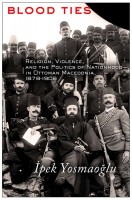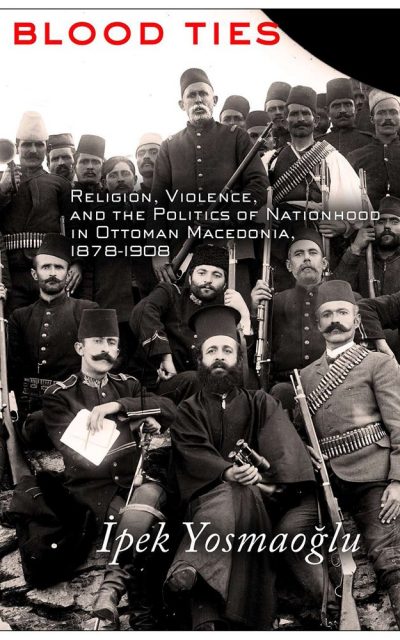 Author: Ipek Yosmaglou
Author: Ipek Yosmaglou
Publisher: Cornell University Press – 320 pages
Book Review by: Paiso Jamakar
The Ottoman Empire – which is now part of the Middle East centering around Turkey, existed for more than six centuries, from 1300 to 1923. We provide you below a link to a very short (just over a minute) video of the rise and fall of this empire. You will see which territories were acquired and then lost, as the years progressed. Just click o this link:
http://www.youtube.com/watch?v=KuwanQyGKHw
The empire of Alexander the Great (356-323 BC) included the Ottoman territories, and was much larger: it stretched from Macedonia on the west all the way east to the northeast border of India. Macedonia alone, which was beginning point of Alexander’s empire is now located in the center of the Southern Balkans north of Greece (which was known as Hellas) and west of what was formerly Thrace and east of a place called Illyria.
Macedonians were different from their neighbors. They had a distinct ethnicity, language, and culture. Their ancient civilization existed a long, time, about three and a half millennia, between 7000 BC and 3500 BC. Here’s a map of the Macedonian Empire showing Egypt, Arabia, and the Persian Gulf: http://www.historyofmacedonia.org/ConciseMacedonia/timeline.html
This book is about politics, religion, war, and nationhood in Ottoman Macedonia, covering a period of just three decades, from 1878 to 1908. It was a period of severe violence, as the author Ipek Yosmaglou describes it: “From the Congress of Berlin to the outbreak of the Balkan Wars, a potent combination of zero-sum imperialism, irredentist nationalism, and modernizing states transformed southeast Europe into a violent conflict zone.”
“As empires collapsed and the boundaries of nation-states were drawn, first on paper and then through the land, a long period of suffering started for the people inhabiting an area stretching from Eastern Europe through the Black Sea littoral and Asia Minor into the Fertile Crescent; they were caught in the riptide of geopolitics, and worse was yet to come.”
During that bloody period, people’s lives were disrupted and solidarities between communities and even individuals broke down. But attacks were nothing new to the Macedonians. Here’s how Ipek Yosmaglou describes it: “The residents of the Ottoman Balkans, including Macedonia, were not entirely unfamiliar with coercive violence, lawlessness, and depredations. All were occasionally visited on them by a variety of bandits and state agents – who sometimes were one and the same.”
This was in the nineteenth century. But the violence escalated into all-out war at the turn of the twentieth century, and by then it was qualitatively different from before. It was “systemic” and “pervasive” and it “pitted one community against another,” as Yosmaglou describes it. This book covers several aspects of that thirty-year historical period, of which we provide you an overview by stating the chapter titles of this book below:
Introduction
- The Ottoman Empire, the Balkans, and the Great Powers on the Road to Murzsteg
- Education and the Creation of National Space
- Territoriality and Its Discontents
- Fear of Small Margins
- A Leap of Faith: Disputes Over Sacred Space
- Logic and Legitimacy in Violence
Conclusion
Another author of that period – John Reed – described the situation in Macedonia in 1916 this way, in his book The War in Eastern Europe: “Macedonia is the most frightful mix of races ever imagined. Turks, Albanians, Greeks, and Bulgarians live there side by side without mingling – and have lived so since the days of St. Paul.”
Surprisingly, this book contains photos, which few books do. The old black-and-white images show people used to dress, live, fight, and even kill in that 30-year period, which is very informative. For example, page 227 displays the February 28, 1903 cover of the magazine L’Illustration with five men standing and holding rifles and a lectern on which are placed severed heads of two men and a woman. The photo caption simply reads: “Ottoman gendarmes and police with severed heads.”
On the following page is photo of another severed head on a draped table, with seven men holding various weapons standing around. The caption reads: “Guerillas with severed head.”
Perhaps few books exist out there on Ottoman Macedonia that present the violent and gruesome side of people as starkly as this book does. So in that respect, this rare, one–of-a-kind book is not only unusual but unique.







